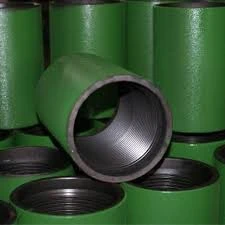- Afrikaans
- Albanian
- Amharic
- Arabic
- Armenian
- Azerbaijani
- Basque
- Belarusian
- Bengali
- Bosnian
- Bulgarian
- Catalan
- Cebuano
- Corsican
- Croatian
- Czech
- Danish
- Dutch
- English
- Esperanto
- Estonian
- Finnish
- French
- Frisian
- Galician
- Georgian
- German
- Greek
- Gujarati
- Haitian Creole
- hausa
- hawaiian
- Hebrew
- Hindi
- Miao
- Hungarian
- Icelandic
- igbo
- Indonesian
- irish
- Italian
- Japanese
- Javanese
- Kannada
- kazakh
- Khmer
- Rwandese
- Korean
- Kurdish
- Kyrgyz
- Lao
- Latin
- Latvian
- Lithuanian
- Luxembourgish
- Macedonian
- Malgashi
- Malay
- Malayalam
- Maltese
- Maori
- Marathi
- Mongolian
- Myanmar
- Nepali
- Norwegian
- Norwegian
- Occitan
- Pashto
- Persian
- Polish
- Portuguese
- Punjabi
- Romanian
- Russian
- Samoan
- Scottish Gaelic
- Serbian
- Sesotho
- Shona
- Sindhi
- Sinhala
- Slovak
- Slovenian
- Somali
- Spanish
- Sundanese
- Swahili
- Swedish
- Tagalog
- Tajik
- Tamil
- Tatar
- Telugu
- Thai
- Turkish
- Turkmen
- Ukrainian
- Urdu
- Uighur
- Uzbek
- Vietnamese
- Welsh
- Bantu
- Yiddish
- Yoruba
- Zulu
Understanding Tubing Collar Components and Their Importance in Oil and Gas Operations
Understanding Tubing Collars Importance and Applications in Oil and Gas Industry
In the oil and gas industry, the terminology surrounding drilling components can sometimes be overwhelming. One critical element that plays a significant role in the operation of oil wells is the tubing collar. Tubing collars are essential connectors used in the tubing string, which conveys oil and gas from the reservoir to the surface. This article will explore what tubing collars are, their types, functions, and their significance in drilling operations.
What is a Tubing Collar?
A tubing collar is a specialized piece of equipment that serves as a connector or joint between sections of tubing. They are designed to allow multiple tubing segments to be linked together, ensuring a continuous pathway for the production of hydrocarbons. Tubing collars can be fabricated from various materials, typically steel, that can withstand the high pressures and corrosive environments encountered in oil and gas wells.
Types of Tubing Collars
There are several types of tubing collars, each designed for specific functions and requirements
1. Standard Tubing Collars These are the most commonly used collars intended to connect standard tubing lengths.
2. Pumpdown Collars These collars allow for the introduction of various downhole tools and monitoring devices. Their specific design facilitates the easy passage of tools into the wellbore.
3. Swaging Collars Used for enhancing the connection strength, swaging collars undergo a process that helps to mechanically alter the tubing to create a tighter seal.
tubing collar

4. Safety Collars These collars are designed to provide an additional safety mechanism to prevent tubing from becoming disconnected under extreme pressures.
Functions of Tubing Collars
The primary function of tubing collars is to create a robust connection between sections of tubing. This connection must be secure to withstand the stresses that occur during operations. Furthermore, tubing collars are designed to allow for easy disassembling and reassembling, which is crucial during maintenance and troubleshooting processes.
Moreover, collars can serve as anchoring points for various tools and devices. For example, downhole pumps may be positioned and held securely using tubing collars. This provides a stable platform for operations such as artificial lift methods - essential for enhancing oil recovery in mature fields.
Significance of Tubing Collars
The significance of tubing collars in oil and gas production cannot be overstated. They ensure the integrity and efficiency of the tubing string, which directly impacts the overall efficacy of the extraction process. A compromised collar could lead to leaks or tubing failures, resulting in costly downtime and potential environmental hazards.
Additionally, advancements in tubing collar technology have contributed to safety improvements in drilling operations. Modern materials and engineering techniques enhance the durability and reliability of collars, reducing the likelihood of failure during critical drilling phases.
Conclusion
In summary, tubing collars are a fundamental component of the oil and gas industry. They play an essential role in connecting tubing sections, ensuring the integrity of the production system, and facilitating the introduction of various tools. Understanding the various types and functions of tubing collars can help professionals in the industry make informed decisions regarding their operations. As technology continues to advance, the design and functionality of tubing collars will likely evolve, further enhancing their capabilities and significance in oil and gas production.
-
Tubing coupling plays a significant role in the chemical industryNewsApr.03,2025
-
The Importance of Tubing Crossover in Various Industrial FieldsNewsApr.03,2025
-
The characteristics and important role of Tubing Pup JointNewsApr.03,2025
-
Characteristics and functions of Pup jointNewsApr.03,2025
-
Characteristics and Functions of Pup Joint PipeNewsApr.03,2025
-
Application of Coupling Casing in Various ScenariosNewsApr.03,2025







